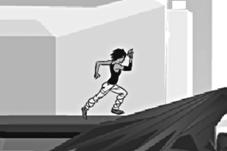"The Ultimate Guide to Pet Block: How to Create a Safe and Engaging Space for Your Furry Friends"
#### Introduction to Pet BlockPet block refers to a designated area or space that is specifically designed to accommodate pets, ensuring their safety and co……
#### Introduction to Pet Block
Pet block refers to a designated area or space that is specifically designed to accommodate pets, ensuring their safety and comfort while allowing them to play and explore. In recent years, the concept of pet blocks has gained popularity among pet owners who seek to create an enriching environment for their beloved animals. This guide will delve into the various aspects of pet blocks, including their benefits, design considerations, and tips for implementation.
#### Benefits of a Pet Block
Creating a pet block offers numerous advantages for both pets and their owners. Firstly, it provides a safe environment where pets can engage in physical activities without the risk of escaping or encountering hazards. This is particularly beneficial for energetic breeds that require ample space to run and play.
Moreover, a well-designed pet block can serve as a mental stimulation area. By incorporating interactive toys, climbing structures, and sensory elements, pet owners can keep their pets entertained and mentally engaged. This is essential for preventing boredom-related behaviors such as chewing, digging, or excessive barking.

Additionally, pet blocks can facilitate socialization among pets. By allowing multiple animals to interact in a controlled environment, owners can help their pets develop crucial social skills and reduce anxiety around other animals and people.
#### Designing Your Pet Block
When designing a pet block, several factors should be taken into consideration to ensure it meets the needs of your pets. Firstly, the size of the block should be appropriate for the type and number of pets you have. Larger breeds may require more space to move around freely, while smaller pets may thrive in a cozier environment.
The materials used in constructing the pet block are also crucial. Fencing should be sturdy and high enough to prevent pets from escaping, while gates should be secure yet easy for owners to access. Additionally, the ground surface should be safe and comfortable, with options like grass, rubber mats, or gravel to prevent injuries.

Incorporating various features can enhance the pet block experience. Consider adding tunnels, ramps, or climbing structures for active play, as well as shaded areas for rest. Water stations and designated potty areas are also essential for maintaining hygiene and comfort.
#### Tips for Implementing a Pet Block
Once you have designed your pet block, it’s time to implement it effectively. Start by introducing your pets to the space gradually. Allow them to explore at their own pace, and supervise initial interactions to ensure they feel safe and comfortable.
Regular maintenance is vital to keep the pet block clean and inviting. This includes cleaning up waste, checking for hazards, and ensuring that all equipment is in good condition. Regularly rotating toys and adding new elements can also keep the environment stimulating and exciting for your pets.

Lastly, consider involving your pets in the design process. Observing their behavior can provide insights into what features they enjoy most, allowing you to tailor the pet block to their preferences.
#### Conclusion
In summary, a pet block is an excellent investment for pet owners looking to create a safe, engaging, and stimulating environment for their furry friends. By understanding the benefits, design considerations, and implementation tips, you can create a pet block that enhances your pet's quality of life and strengthens the bond between you and your beloved animals. Whether you have dogs, cats, or other small pets, a well-thought-out pet block can provide endless opportunities for play, exploration, and socialization.